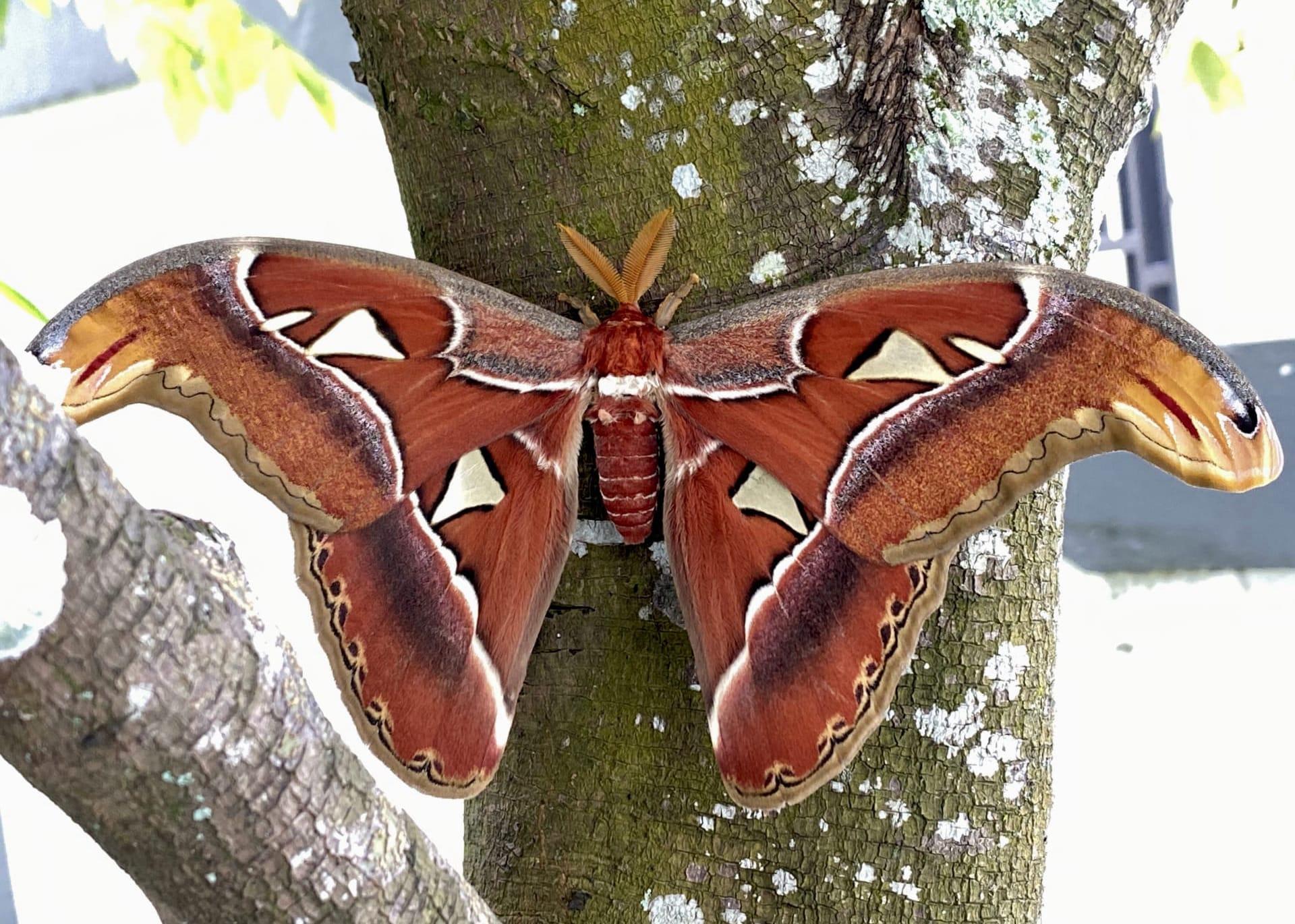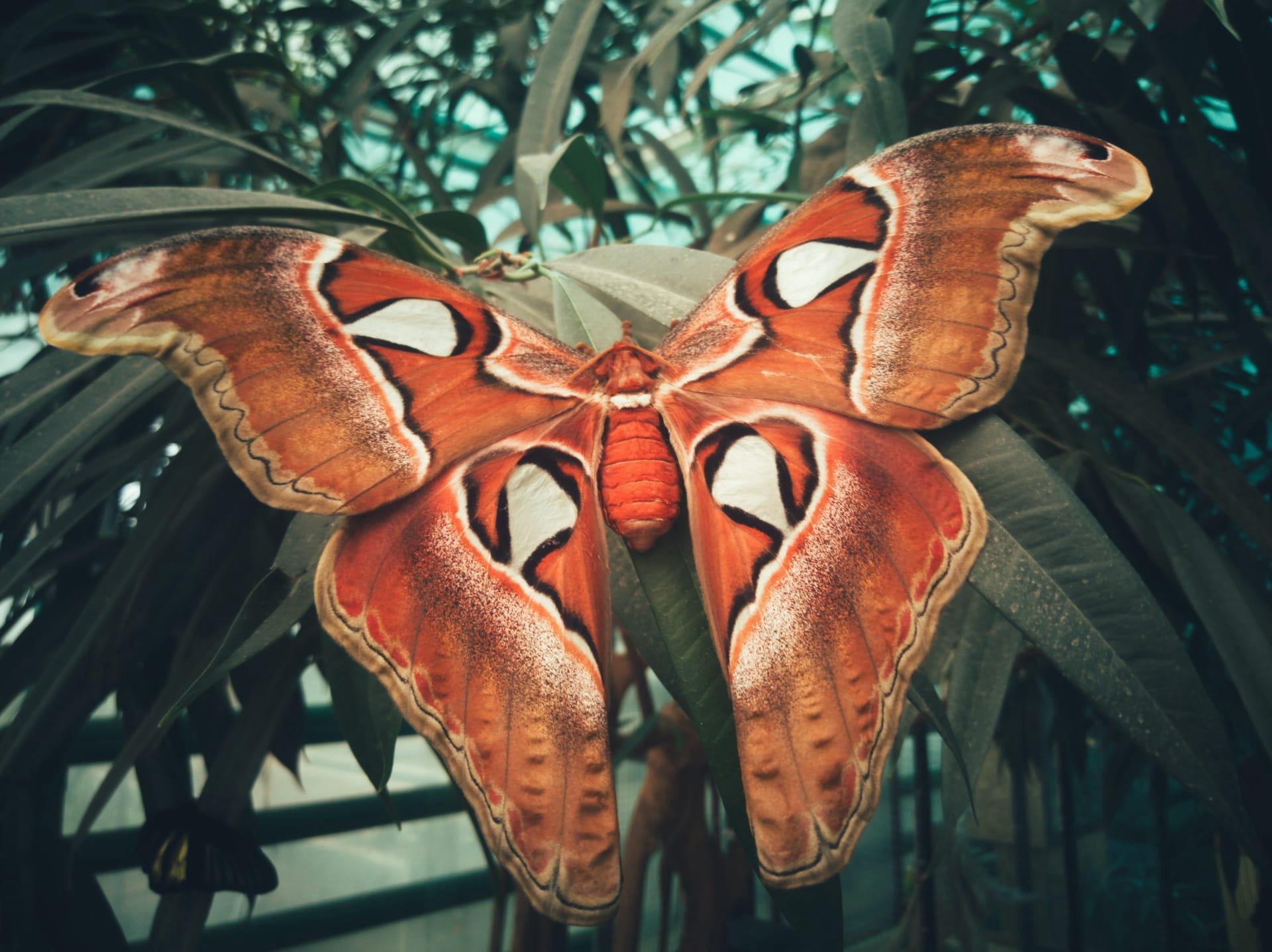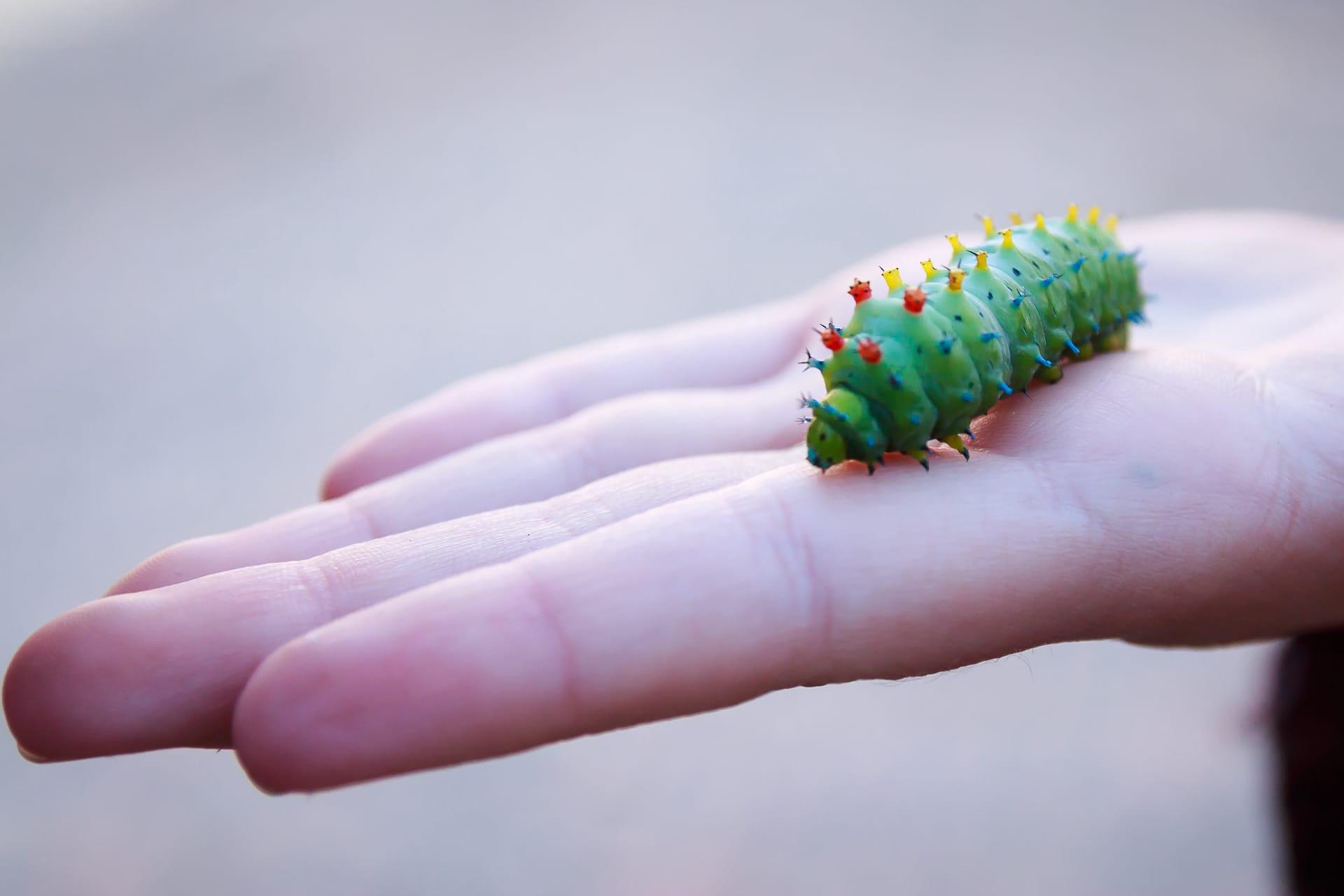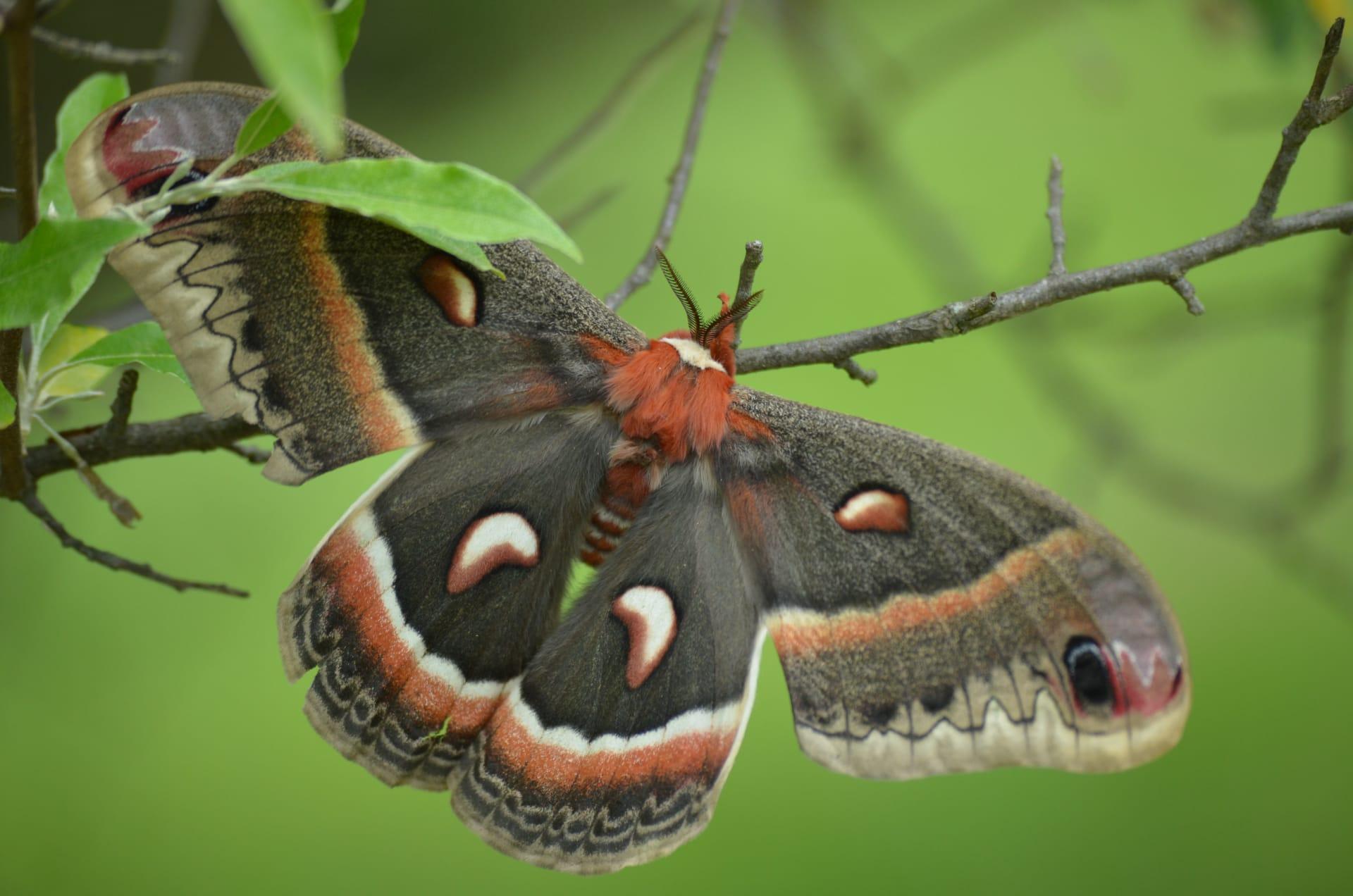1
Did you know that the Cecropia Moth, one of North America's largest native moths, has a wingspan stretching up to 7 inches (about 18 cm)? This impressive size makes them hard to miss, but despite their large wings, these moths don't eat at all once they reach adulthood. That's right, the adult Cecropia Moth has no mouth! Their entire adult life, which lasts only about 7 to 14 days, is dedicated to mating and laying eggs. In this short lifespan, they rely solely on fat reserves accumulated during their caterpillar stage for energy.
The Cecropia Moth's camouflage game is strong. As caterpillars, they sport bright green colors with fascinating knob-like protrusions, resembling a plant part to avoid predators. As adults, their brown, gray, white, and red wing patterns mimic dead leaves, making them nearly invisible when resting on tree barks during the day. This natural disguise is crucial for their survival, especially considering their daytime immobility due to lack of mouthparts and the subsequent inability to feed.

2
These moths are night flyers and have an incredible sense of smell. Male Cecropia Moths can detect the pheromones of a female moth from miles away. The females release these chemical signals into the air from special glands to attract a mate. It's like a long-distance love letter! Once they catch a whiff, the males, using their large, feathered antennae, can navigate through the night to find their potential partner.
Their life cycle is a marvel of transformation. Starting from a tiny egg, the Cecropia caterpillar goes through five distinct growth stages, known as instars, over several weeks. Each instar is different in appearance, with the final one reaching up to 4.5 inches (about 11 cm) in length. After the final instar, the caterpillar forms a tough brown cocoon attached to a tree branch, where it metamorphoses into a moth. This process, from egg to adult moth, typically spans one year, with most of it spent in the cocoon stage during winter.

3
Cecropia Moths are part of the Saturniidae family, known for their giant silk moths. In their larval stage, they produce silk from a gland under their lips to create their cocoons. This silk is not like the commercial silk from silkworms but is coarser and used for protection during their pupal stage. The cocoon itself is a masterpiece of nature's engineering, designed to shield the pupa from harsh weather and predators.
Interestingly, these moths have a unique defense mechanism as caterpillars. When they sense danger, they can emit a series of clicks as a warning. This sound production, rare in caterpillars, is believed to deter predators, particularly birds. Some scientists speculate that these clicks may mimic the sounds of bats' echolocation, a primary predator for many birds, thereby scaring the potential predators away.

4
Despite their size, Cecropia Moths are masters of evasion. Their wings contain eyespots, large circular markings that resemble eyes. These eyespots are not just for show; they play a crucial role in startling potential predators. When a bird or small mammal approaches, the moth reveals these eyespots, creating an illusion of a larger, more threatening creature. This momentary confusion often gives the moth enough time to escape.
Reproduction is the primary focus of an adult Cecropia Moth's life, and they do it with urgency. After emerging from their cocoons, they have a very short window to find a mate. The females emit pheromones and wait for males to find them. Once they mate, the female lays up to 100 eggs, usually on the underside of leaves. These eggs hatch into caterpillars, starting the next generation's life cycle. This urgency in reproduction is vital for the species' survival, considering the adults' brief lifespan.

5
The Cecropia Moth plays a vital role in the ecosystem. As caterpillars, they feed on a variety of tree leaves, including maple, birch, and cherry. This feeding can help with natural pruning, which promotes new growth in trees. However, they're not considered a major pest because they don't often occur in large enough numbers to cause significant damage.
Lastly, the Cecropia Moth is a beautiful example of biodiversity and the importance of insect species in our environment. Despite their large size, these moths are quite harmless to humans and serve as a crucial component of the food web. Birds, bats, and other small animals rely on them for food. Their presence indicates a healthy, balanced ecosystem, showcasing the interconnectedness of life and the importance of preserving natural habitats.